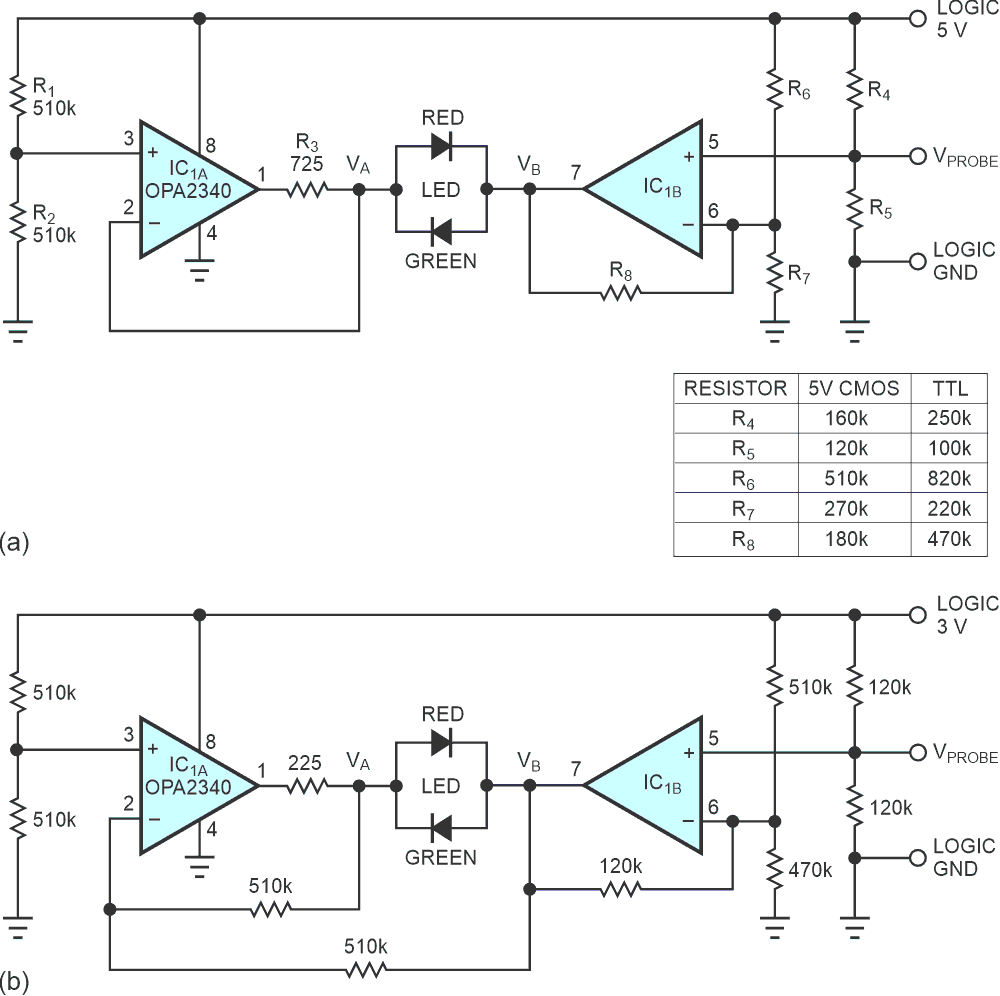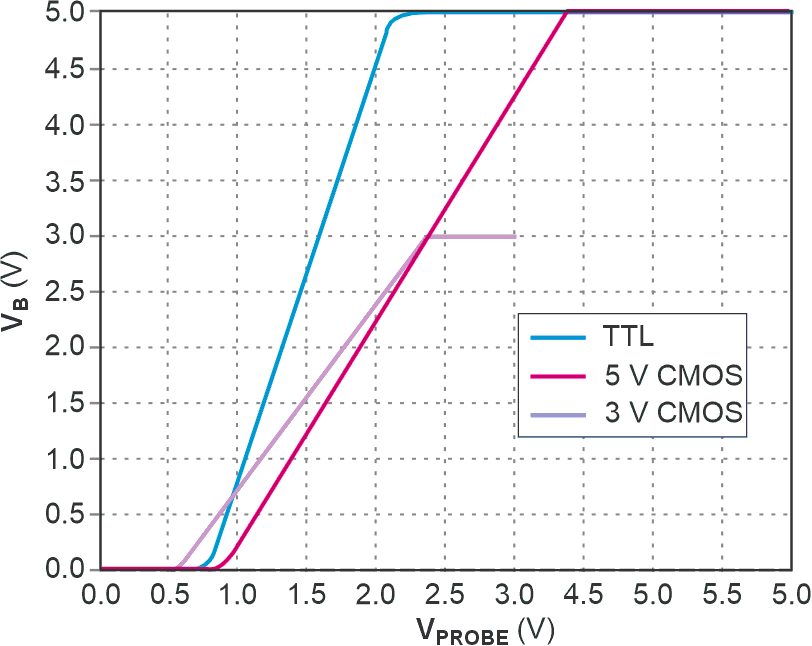When probing digital logic levels on a circuit board, locating the indicator of the logic level near the probe tip is convenient, so that you can keep both the indicator and probe tip constantly in sight. When using a handheld DVM or oscilloscope probe, you must momentarily look away to read the logic level. In that instant, the probe can slip and cause a short circuit. The circuit in Figure 1a implements a simple handheld logic probe using just a few components. This probe can measure high, low, and high-impedance logic states, in addition to indicating switching logic states. This probe is useful for quick measurements of dc logic levels. You can use a similar probe circuit (Figure 1b) for 3 V CMOS logic.
 |
|
| Figure 1. | A simple handheld logic probe uses a rail-to-rail op amp and a bicolor LED (a). A modified probe circuit works with 3 V CMOS logic (b). |
The circuit centers around the OPA2340 dual rail-to-rail op amp and a bicolor LED. The forward voltage for the red and green LEDs are 2 and 2.1 V, respectively. Op amp IC1A derives a buffered 2.5 V reference output from the 5 V supply, and R3 limits the current to the LED when it is on. IC1B buffers and amplifies the probed logic signal to a 0 to 5 V output level. R4 and R5 set a reference level for the positive input of IC1B for the case of a high-impedance level. When a logic high is present, the green LED lights; a logic low lights the red LED. When a high-impedance state is present, the LED is off.
The output voltage transfer function of IC1B is

which makes VLED = VB – 2.5 V. The values of R6, R7, and R8 are such that VB limits at the positive or negative power-supply rail when VPROBE is at the logic family’s minimum low or high level, respectively. Figure 2 shows the voltage- transfer function for VB. When VB limits at the rail voltage, the LED lights red or green, depending on the probed logic level. When VB is within 0.5 V of the negative rail, the red LED turns on; when VB is within 0.4 V of the positive rail, the green LED turns on. If the probe measures a high-impedance state, voltage- divider resistors R4 and R5 set the positive input of IC1B, and the voltage across the LED is approximately 0 V.
 |
|
| Figure 2. | The output of IC1B, VB, limits at either the positive or negative supply rail depending on the probe voltage. |
In Figure 1b, the output of IC1B feeds into IC1A’s inverting input. For the resistor values in Figure 1b, the transfer function for IC1A is VA = –VB + 3 V, thus making VLED = 2VB – 3 V.
